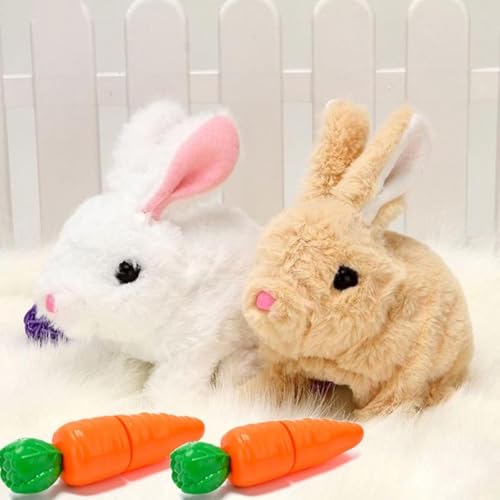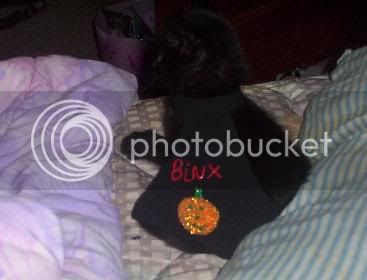Interesting Halloween Stuff

1. Where does Halloween come from?
Our modern celebration of Halloween is a descendent of the ancientCeltic fire festival called "Samhain". The word is pronounced "sow-in",with "sow" rhyming with cow.
2. What does "Samhain" mean?
The Irish English dictionary published by the Irish Texts Societydefines the word as follows: "Samhain, All Hallowtide, the feast of thedead in Pagan and Christian times, signalizing the close of harvest andthe initiation of the winter season, lasting till May, during whichtroops (esp. the Fiann) were quartered. Faeries were imagined asparticularly active at this season. From it the half year is reckoned.also called Feile Moingfinne (Snow Goddess).(1) The Scottish GaelisDictionary defines it as "Hallowtide. The Feast of All Soula. Sam Fuin= end of summer."(2) Contrary to the information published by manyorganizations, there is no archaeological or literary evidence toindicate that Samhain was a deity. The Celtic Gods of the dead wereGwynn ap Nudd for the British, and Arawn for the Welsh. The Irish didnot have a "lord of death" as such.
3. Why was the end of summer of significance to the Celts?
The Celts were a pastoral people as opposed to an agricultural people.The end of summer was significant to them because it meant the time ofyear when the structure of their lives changed radically. The cattlewere brought down from the summer pastures in the hills and the peoplewere gathered into the houses for the long winter nights of story-telling and handicrafts.
4. What does it have to do with a festival of the dead?
The Celts believed that when people died, they went to a land ofeternal youth and happiness called Tir nan Og. They did not have theconcept of heaven and hell that the Christian church later brought intothe land. The dead were sometimes believed to be dwelling with theFairy Folk, who lived in the numerous mounds or sidhe (pron. "shee")that dotted the Irish and Scottish countryside. Samhain was the newyear to the Celts. In the Celtic belief system, turning points, such asthe time between one day and the next, the meeting of sea and shore, orthe turning of one year into the next were seen as magickal times. Theturning of the year was the most potent of these times. This was thetime when the "veil between the worlds" was at its thinnest, and theliving could communicate with their beloved dead in Tir nan Og.
5. What about the aspects of "evil" that we associate with the night today?
The Celts did not have demons and devils in their belief system. Thefairies, however, were often considered hostile and dangerous to humansbecause they were seen as being resentful of men taking over theirlands. On this night, they would sometimes trick humans into becominglost in the fairy mounds, where they would be trapped forever. Afterthe coming of the Christians to the Celtic lands, certain of the folksaw the fairies as those angels who had sided neither with God or withLucifer in their dispute, and thus, were condemned to walk the earthuntil judgment day.(3) In addition to the fairies, many humans wereabroad on this night, causing mischief. since this night belongedneither to one year or the other, Celtic folk believed that chaosreigned and the people would engage in "horseplay and practicaljokes".(4) This served also as a final outlet for high spirits beforethe gloom of winter set in.
6. What about "trick or treat"?
During the course of these hijinks, many of the people would imitatethe fairies and go from house to house begging for treats. Failure tosupply the treats would usually result in practical jokes being visitedon the owner of the house. Since the fairies were abroad on this night,an offering of food or milk was frequently left for them on the stepsof the house, so the homeowner could gain the blessings of the "goodfolk" for the coming year. Many of the households would also leave outa "dumb supper" for the spirits of the departed.(5) The folks who wereabroad in the night imitating the fairies would some- times carryturnips carved to represent faces. This is the origin of our modernJack-o-lantern.
7. Was this also a religious festival?
Yes. Celtic religion was very closely tied to the Earth. Their greatlegends are concerned with momentous happenings which took place aroundthe time of Samhain. many of the great battles and legends of kings andheroes center on this night. Many of the legends concern the promotionof fertility of the earth and the insurance of the continuance of thelives of the people through the dark winter season.
8. How was the religious festival observed?
Unfortunately, we know very little about that. W.G. Wood-Martin, in hisbook, "Traces of the Elder Faiths of Ireland" states, "There iscomparitively little trace of the religion of the Druids nowdiscoverable, save in the folklore of the peasantry, and the referencesrelative to it that occur in ancient and authentic Irish manuscriptsare, as far as present appearances go, meagre and insufficient tosupport anything like a sound theory for full development of theancient religion."(6) The Druids were the priests of the Celticpeoples. They passed on their teachings by oral tradition instead ofcommitting them to writing, so when they perished, most of theirreligious teachings were lost. We DO know that this festival wascharacterized as one of the four great "Fire Festivals" of the Celts.Legends tell us that on this night, all the hearth fires in Irelandwere extinguished, and then re-lit from the central fire of the Druidsat Tlachtga, 12 miles from the royal hill of Tara. This fire waskindled from "need fire" which had been generated by the friction ofrubbing two sticks together as opposed to more conventional methodscommon in those days.(7) The extinguishing of the fires symbolized the"dark half" of the year, and the re-kindling from the Druidic fires wassymbolic of the returning life hoped for, and brought about through theministrations of the priesthood.
9. What about sacrifices?
Animals were certainly killed at this time of year. This was the timeto "cull" from the herds those animals which were not desired forbreeding purposes for the next year. Most certainly, some of thesewould have been done in a ritualistic manner for the use of thepriesthood.
10. Were humans sacrificed?
Scholars are sharply divided on this account, with about half believingthat it took place and half doubting its veracity. Caesar and Tacituscertainly tell tales of the human sacrifices of the Celts, but NoraChadwick points out in her book "The Celts" that "it is not withoutinterest that the Romans themselves had abolished human sacrifices notlong before Caesar's time, and references to the practice among variousbarbarian peoples have certain overtones of self-righteousness. Thereis little direct archaeological evidence relevant to Celtic sacrifice."(8) Indeed, there is little reference to this practice in Celticliterature either. The only surviving story echoes the story of theMinotaur in Greek legend. The Fomorians, a race of evil giants said toinhabit portions of Ireland before the coming of the Tuatha de Danaan,or "people of the Goddess Danu",demanded the sacrifice of 2/3 of thecorn, milk, and first born children of the Fir Bolg, or humaninhabitants of Ireland. The De Danaan ended this practice in the secondbattle of Moy Tura, which incidentally took place on Samhain.
11. What other practices were associated with this season?
Folk tradition tells us of many divination practices associated withSamhain. Among the most common were divinations dealing with marriage,weather, and the coming fortunes for the year. These were performed viasuch methods as ducking for apples, and apple peeling. Ducking forapples was a marriage divination. The first person to bite an applewould be the first to marry in the coming year. Apple peeling was adivination tosee how long your life would be. The longer the unbrokenapple peel, the longer your life was destined to be.(9) In Scotland,people would place stones in the ashes of the hearth before retiringfor the night. Anyone whose stone had been disturbed during the nightwas said to be destined to die during the coming year.
12. How did these ancient Celtic practices come to America?
When the potato crop in Ireland failed, many of the Irish people,modern day descendents of the Celts, immigrated to America, bringingwith them their folk practices, which are the remnants of the Celticfestival observances.
13. We in America view this as a harvest festival. Did the Celts also view it as such?
Yes. The Celts had 3 harvests: Aug 1, or Lammas, was the first harvest,when the first fruits were offered to the Gods in thanks. The FallEquinox was the "true harvest". This was when the bulk of the cropswould be brought in. Samhain was the final harvest of the year.Anything left on the vines or in the fields after this date wasconsidered blasted by the fairies, or "pu'ka", and unfit for humanconsumption.
14. Does anyone today celebrate Samhain as a religious observance?
Yes. many followers of various pagan religions, such as Druids andWiccans observe this day as a religious festival. They view it as amemorial day for their dead friends, similar to the national holiday ofMemorial Day in May. It is still a night to practice various forms ofdivination concerning future events. Also, it is considered a time towrap up old projects, take stock of ones life, and initiate newprojects for the coming year. As the winter season is approaching, itis a good time to do studying on research projects and also a goot timeto begin hand work such as sewing, leather working, woodworking, etc.for Yule gifts later in the year.
15. Does this involve human or animal sacrifice?
Absolutely NOT! Hollywood to the contrary, blood sacrifice is notpracticed by modern day followers of Wicca or Druidism. There may besome people who THINK they are practicing Wicca by performing bloodsacrifices, but this is NOT condoned by reputable practitioners of themodern day NeoPagan religions.
FOOTNOTES:
(1) Rev. Patrick Dineen, "An Irish English Dictionary" (Dublin, 1927), p. 937
(2) Malcolm MacLennan, "A Pronouncing and Etymological Dictionary of the Gaelic Language" (Aberdeen, 1979), p. 279
(3) W.G. Wood-Martin,"Traces of the Elder Faiths of Ireland" (Port Washington, 1902), p. 5.
(4) Kevin Danaher,"The Year in Ireland", (Cork,1972), p. 214
(5) Alwyn & Brinley Rees,"Celtic Heritage" (New York,1961), p. 90
(6) Wood-Martin, p. 249
(7) Rees & Rees, p. 90
(8) Nora Chadwick, "The Celts" (Harmondsworth,1982), p. 151
(9) Madeleine Pelner Cosman, "Medieval Holidays and Festivals," (New York, 1981), p. 81
BIBLIOGRAPHY:
Bord, Janet & Colin, "The Secret Country", London: Paladin Books, 1978
Chadwick, Nora, "The Celts", Harmondsworth: Penguin Books, 1982
Coglan, Ronan, "A Dictionary of Irish Myth and Legend", Dublin,1979
Cosman, Madeleine Pelner, "Medieval Holidays and Festivals", New York: Charles Scribner's Sons, 1981
Danaher, Kevin, "The Year in Ireland", Cork: The Mercier Press, 1972
Dineen, Rev. Patrick S.,M.A, "An Irish English Dictionary", Dublin: The Irish texts Society, 1927
MacCana, Proinsias, "Celtic Mythology", London: The Hamlyn Publishing Group Limited, 1970
MacLennan, Malcolm, "A Pronouncing and Etymological Dictionary of theGaelic Language", Aberdeen: Acair and Aberdeen University Press, 1979
MacNeill, Maire', "The Festival of Lughnasa", Dublin: Comhairle Bhealoideas Eireann,1982
Powell, T.G., E., "The Celts", New York: Thanes & Hudson,1980Rees, Alwyn and Brinley, "Celtic Heritage, Ancient Traditions inIreland and Wales", New York: Thanes & Hudson, 1961
Sharkey, John, "Celtic Mysteries", New York: Thanes and Hudson, 1975
Spence, Lewis, "British Fairy Origins", Wellingborough: Aquarian Press, 1946
Squire, Charles, "Celtic Myth & Legend, Poetry & Romance", New York: Newcastle Publishing Co, Inc. 1975
Toulson, Shirley, "The Winter Solstice", London: Jill Norman & Hobhouse, Ltd, 1981
Wood-Martin, W.G., "Traces of the Elder Faiths of Ireland", Vols I & II, Port Washington: Kennikat Press, 1902 (c)
copywrite 1988, Rowan Moonstone P O Box 21058 OKC. OK 73120
























































